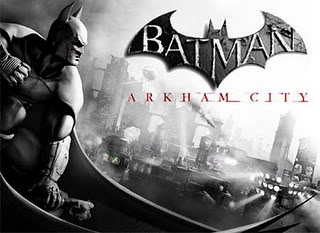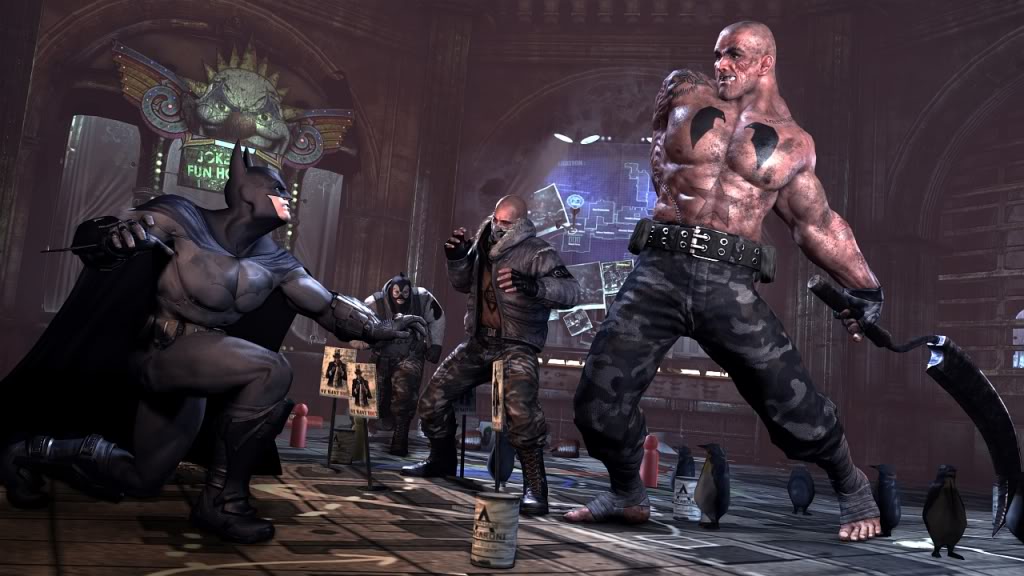This post has not been edited by the GamesBeat staff. Opinions by GamesBeat community writers do not necessarily reflect those of the staff.
 Fantasy, as both genre and concept, is a crucial principle behind a vast majority of video games. Whether you're trundling across devastated stretches of battlefield in some behemoth armored vehicle, or fighting off an armada of alien ships orbiting the planet, or role-playing as a zombie-witch vampire-hunting dragon-slayer; these ideas tweak an essential nerve: they insert the Player into a situation they, in most cases, would never experience in reality, and empower said Player to practice his/her imagination in the given situation. It's these inherent power-fantasies we exhibit when playing video games that game designers use to help ease the reluctance of the mind to accept what it knows to be fake. Achieving a level of engrossment capable of tricking your head into thinking you're someplace else, or to share the emotions of a character, is truly the sign of great craftsmanship. Batman: Arkham City is an excellent example of engrossing, mind-tricking, innately awesome power-fantasy. And it's a pretty good game, too.
Fantasy, as both genre and concept, is a crucial principle behind a vast majority of video games. Whether you're trundling across devastated stretches of battlefield in some behemoth armored vehicle, or fighting off an armada of alien ships orbiting the planet, or role-playing as a zombie-witch vampire-hunting dragon-slayer; these ideas tweak an essential nerve: they insert the Player into a situation they, in most cases, would never experience in reality, and empower said Player to practice his/her imagination in the given situation. It's these inherent power-fantasies we exhibit when playing video games that game designers use to help ease the reluctance of the mind to accept what it knows to be fake. Achieving a level of engrossment capable of tricking your head into thinking you're someplace else, or to share the emotions of a character, is truly the sign of great craftsmanship. Batman: Arkham City is an excellent example of engrossing, mind-tricking, innately awesome power-fantasy. And it's a pretty good game, too.
Set as a direct sequel to Rocksteady Studios' 2009 hit Batman: Arkham Asylum, Arkham City has “The Batman” himself captured by Hugo Strange, the mad doctor-turned-warden of the titular prison carved out from a section of Gotham City. So as all good Batmen should, our hero must now escape/solve crime/dispense justice liberally, all while keeping the numerous supervillains behind the prison's looming walls under control. My depiction really doesn't do the story justice, but I'd hate to spoil what I found to be a pretty enthralling experience. The whole thing is helped as well by the quality of the camera-work, or what could pass as the video game equivalent of in-game cinematography. Punches look heavy, perspectives are tightly-framed just over the shoulder, and the camera rarely gets caught up in the scenery. It's become cliché to bring up "immersion" when talking about video games, but Arkham City excels at whatever synonym you put in its place.
As I said earlier, the game does a fantastic job of making you feel powerful. Well… OK, maybe not so much 'powerful' as in, say, a showcase of overt strength — though some encounters in the game may be evidence to the contrary — but more a sense of complete control over every situation. No matter the size or number of thugs and lowlifes you face in Arkham City, there's this general feeling that you are in control — that you dictate the pace of every fight. This is due, in part, to the fluidity of combat. Though somewhat improved from what I could tell, the melee in Arkham City has not changed greatly from its predecessor, still relying on precise countering and specific methods for taking out armored or shielded opponents. There's a certain rhythm to combat as well, a timing between strikes, counters and special attacks, that when done correctly can lead to some real acrobatic feats (and combo multipliers).

Like Rhythm Tengoku, but with fists.
Though Batman's acrobatic prowess is not limited to just fighting. Getting around the immense makeshift prison that is Arkham City will take the many tools at his disposal, and a few new gadgets he'll find along the way. If you played Batman: Arkham Asylum, you'll be happy to know that most of the toys from that game — i.e. the batclaw, the batarang, explosive gel — are available right from the beginning in Arkham City. These tools become quite necessary when dispatching the various thugs you'll come across while getting to an objective. He being Batman and all, stealth is also a crucial tenet, especially when taking down thugs armed with assault- or sniper rifles. Similar to Arkham Asylum, many areas of Arkham City are tailor-made for setting traps and being generally sneaky. Some situations will require you to plan routes and coordinate takedowns, and hold a slight air of puzzle-solving.
The area in which you'll be swinging around and dishing out pain is not that large when compared to other open-world games, but that by no means should be a mark against it. What Arkham City lacks in total square-acreage it makes up for in sheer content. The city is littered with different objects and goals for you to collect or accomplish. Riddler trophies (now rivaling only Crackdown's Agility Orbs in my obsessive need to collect shiny objects) and Riddler riddles are scattered in every nook and cranny of the prison. Alternative side-missions feature notable characters from the Batman mythology, and some lesser-known faces (at least to me) that reveal how little I know of the canon.
 I can say without doubt that the voice-over work is fantastic. The voice cast from Arkham Asylum make their return with excellent performances (with Mark Hamill reprising his role as the Joker), as well as the many, many new faces you'll meet (one being the prolific video game voice actor Nolan North). No performance sounds like the proverbial 'phone-in' job, a welcome aural pleasure which has become increasingly rare for video games based on comic franchises.
I can say without doubt that the voice-over work is fantastic. The voice cast from Arkham Asylum make their return with excellent performances (with Mark Hamill reprising his role as the Joker), as well as the many, many new faces you'll meet (one being the prolific video game voice actor Nolan North). No performance sounds like the proverbial 'phone-in' job, a welcome aural pleasure which has become increasingly rare for video games based on comic franchises.
Indeed, a great reverence is given toward the Batman fiction in Arkham City. Creative freedom in licensed game properties is often constrained by the rights-holders, but that doesn't seem to be the case here. Rocksteady Studios has stunningly paid homage to this illustrious franchise while carving their own place in it, and decided to make an excellent game to boot. Whether you're a Batman aficionado or one of the Bat-laymen, have a go with Arkham City — chances are, you'll have a great time.
